After meeting in Hanoi and spending time in Central Viet Nam (Hoi An, Hue and the caves of Phong Nha), and after our motorcycle adventures through the Central Highlands of Viet Nam, we rested in cool and breezy Dalat. But soon, the travel bug hits us again and it’s time to go explore Southern Viet Nam. Keeping Saigon as our final Vietnamese destination, we are keen to discover the Mekong Delta.
The Mekong Delta is the most fertile region of Vietnam, providing almost 60% of the rice for the country. The 8 tributaries to the large Mekong river are each very large rivers in their own right. Due to the Delta’s low lying areas this area is subject to severe flooding every year during the rainy season.
The flip side of this challenging geography is that the sediments which accrue during the rainy season make for rich agricultural land. We look forward to seeing the bounty at markets in the region as well as to visit some of the many fruit orchards for which this area is known.
The Mekong Delta has another distinguishing characteristic ~ It is home to the largest Khmer population outside of Cambodia. This means that this region has its own distinct religious architecture.
A large Chinese ethnic minority adds to the Khmer profile to make the Mekong region a unique area.
We start in Ben Tre, which is a sleepy backwater town just 2 hours South of Saigon. We arrive at a homestay chosen more for its low price than any other feature and discover a somewhat gloomy and run down place, though well located. The family though, are very friendly and cook us up a very large “elephant ear fish” from the river, for dinner, which is delicious wrapped in rice paper with fresh greens and veggies.
Huang, with his delightful personality, offers to be our guide for a boat ride, but first he insists on showing us the local pagoda. Coming from Hoi An with a rich collection of Pagodas, this is not in fact our priority, but there is no way around it, he has his mind set, so we follow along.
 |
| This pagoda is new and modern and has a kitschy feel to it ~ Note the “Baby Buddha” plastic sculpture in front of the large wooden one. |
 |
| Huang is rather insistent that he take photographs of us in the pagoda. Lots of them. He enjoys being the photographer, but hasn’t quite mastered the trick of keeping the camera still. |
 |
| Huang and Adam posing in front of the large bell. |
Huang soon “gets” that we are keen to get on the boat and into nature, so he changes gear and proudly takes us to see some local orchards belonging to friends of his.
 |
| This is an orchard of DRAGON FRUIT. |
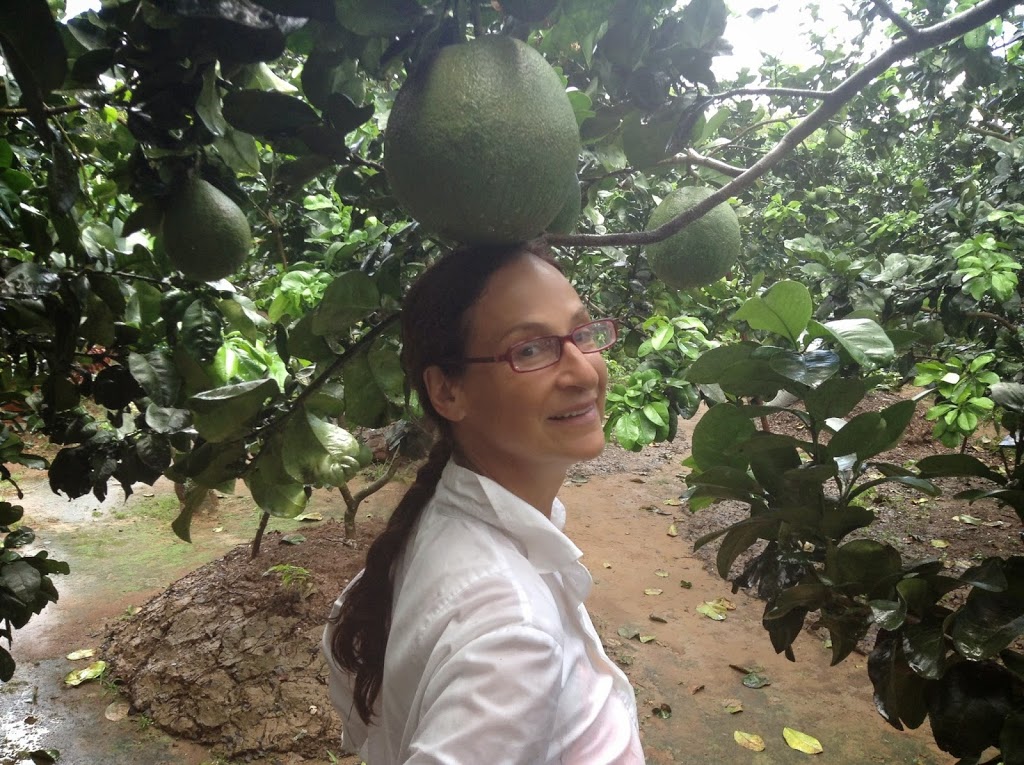 |
| A pomello (grapefruit) orchard with HUGE fruits as big or bigger than the human head, as you can see. Each pomello weighs between 2 and 3 pounds and is unusually sweet for a grapefruit. |
After our “tour” of the orchards, Huang is finally ready to take us for a boat ride on the river.
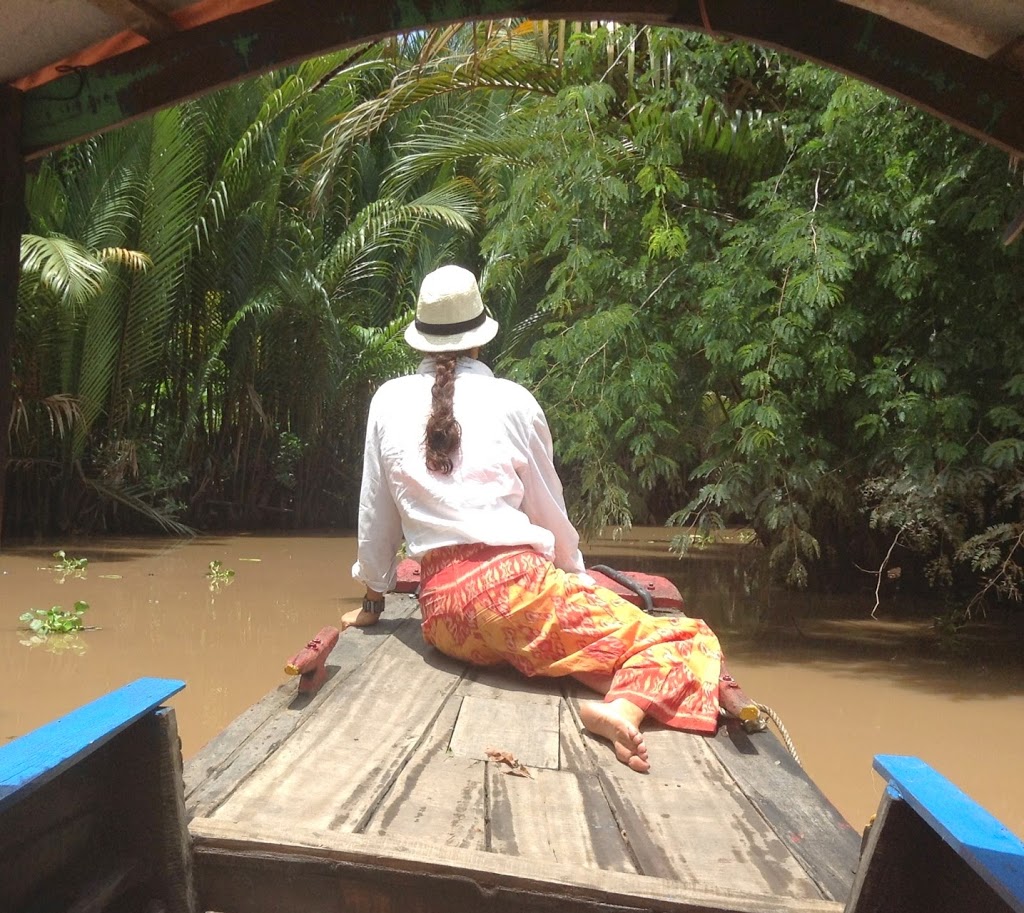 |
| At the prow…. |
 |
| The boat goes through narrow riverlets thickly lined with palm trees on both sides. |
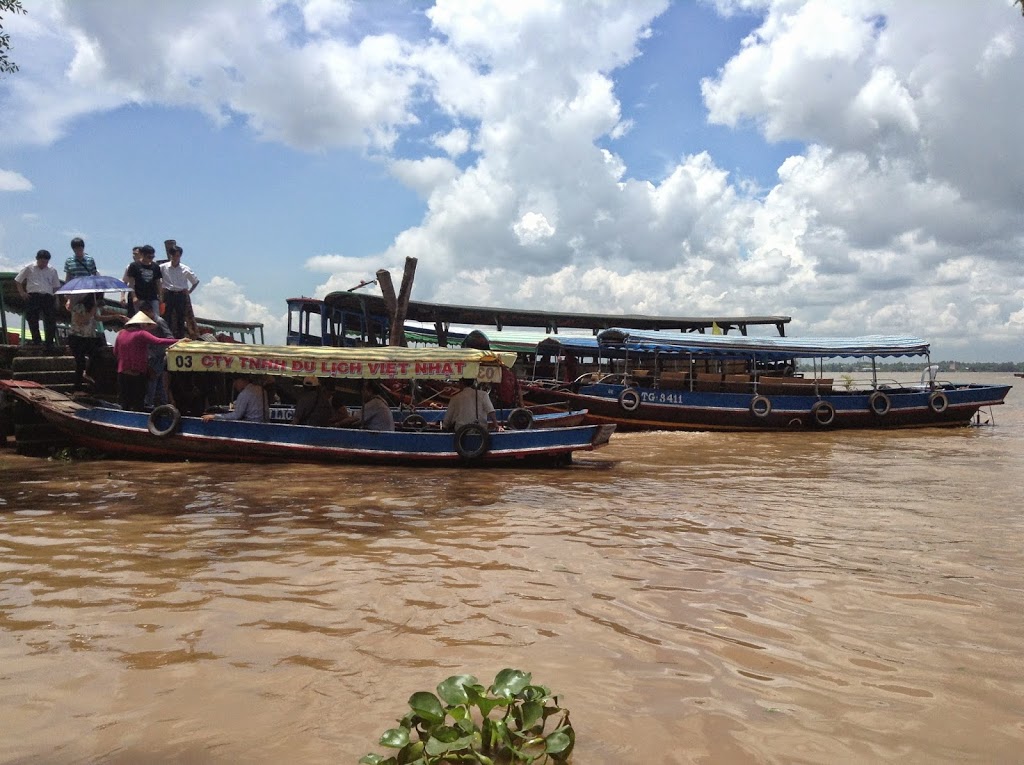 |
| The small riverlets converge into the wide and large main river. |
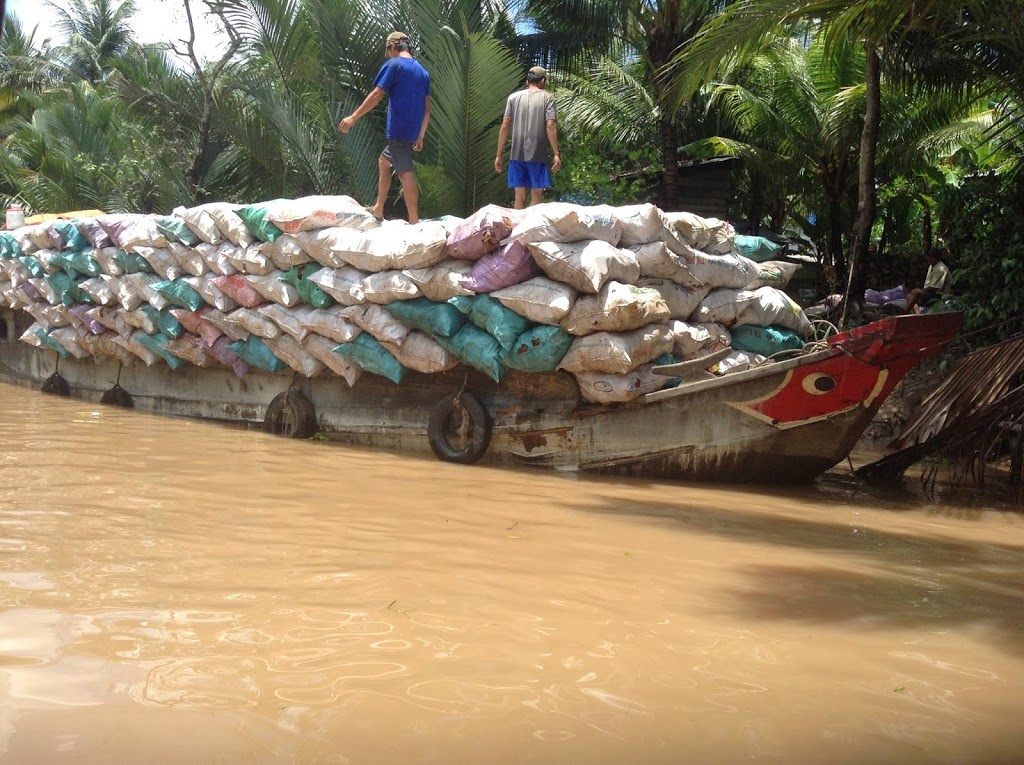 |
| There is a fair amount of industry in this region and much of it takes place using the river for transportation. |
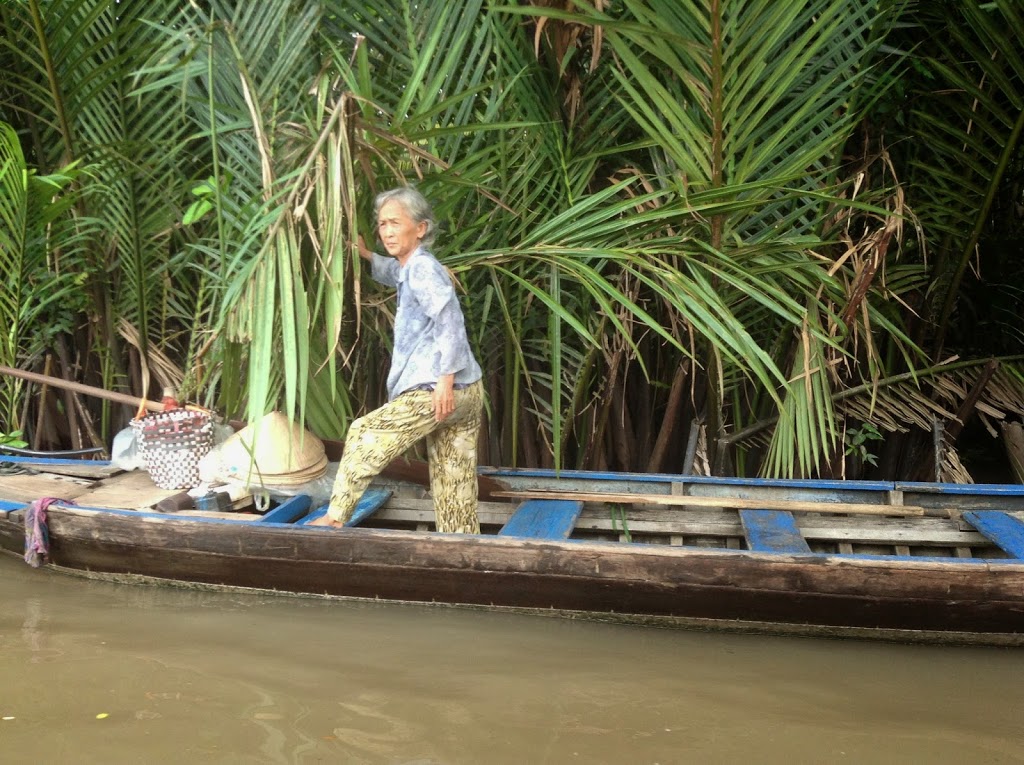
Ben Tre is definitely coconut territory. We get off the boat for a visit to a somewhat touristy, but still worth it, coconut candy factory where its fun to see all the steps from coconut to coconut caramel. We also take a walk along the path which lines the river, saying hi to some of the locals and catching glimpses of their daily lives.
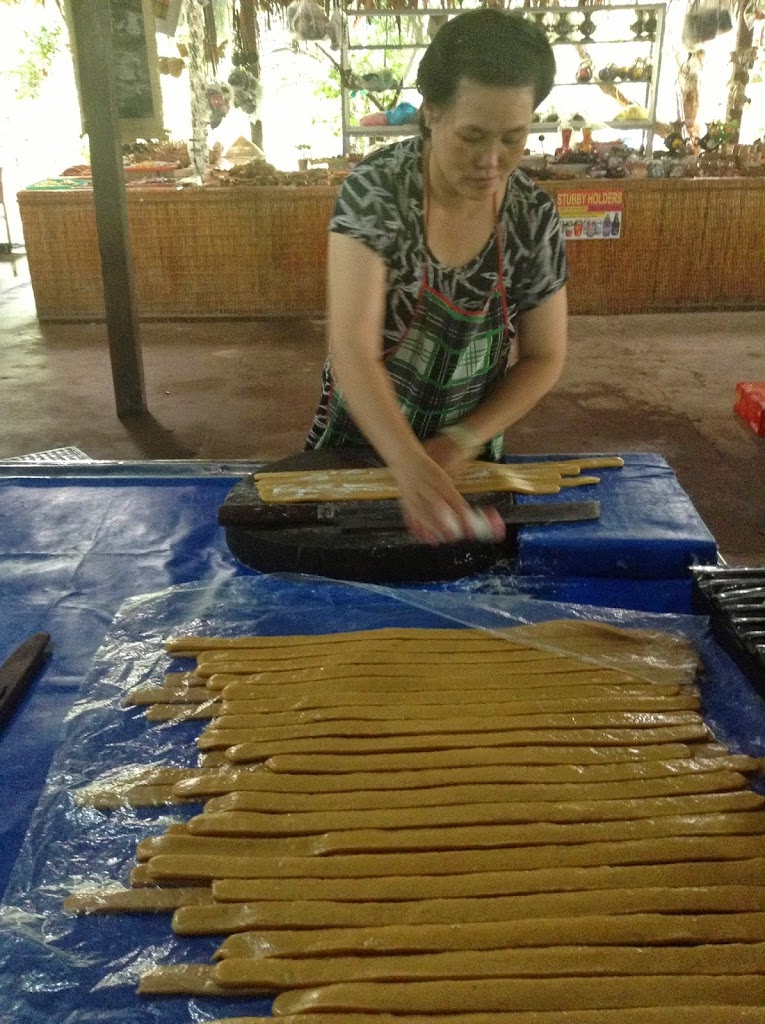 |
| The coconut candy gets pulled and pressed and finally cut into pieces. |
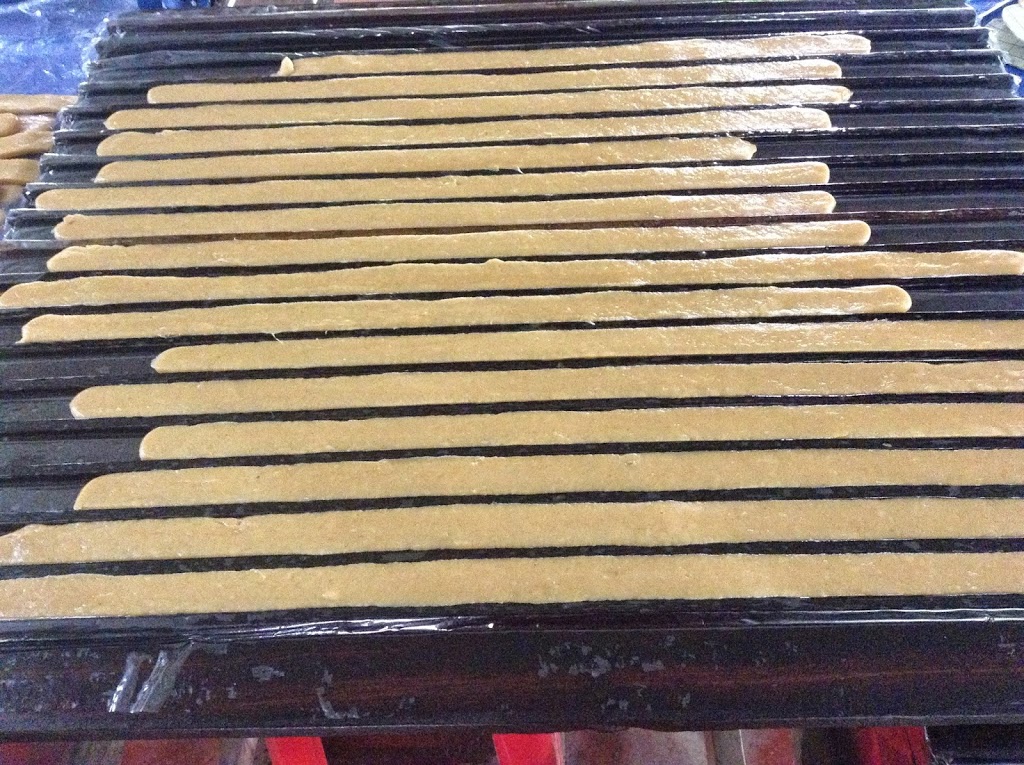 |
| Coconut candy, ready to be cut. 10% sugar, the rest is coconut with a bit of malt. Gooey, chewy, yummy. |
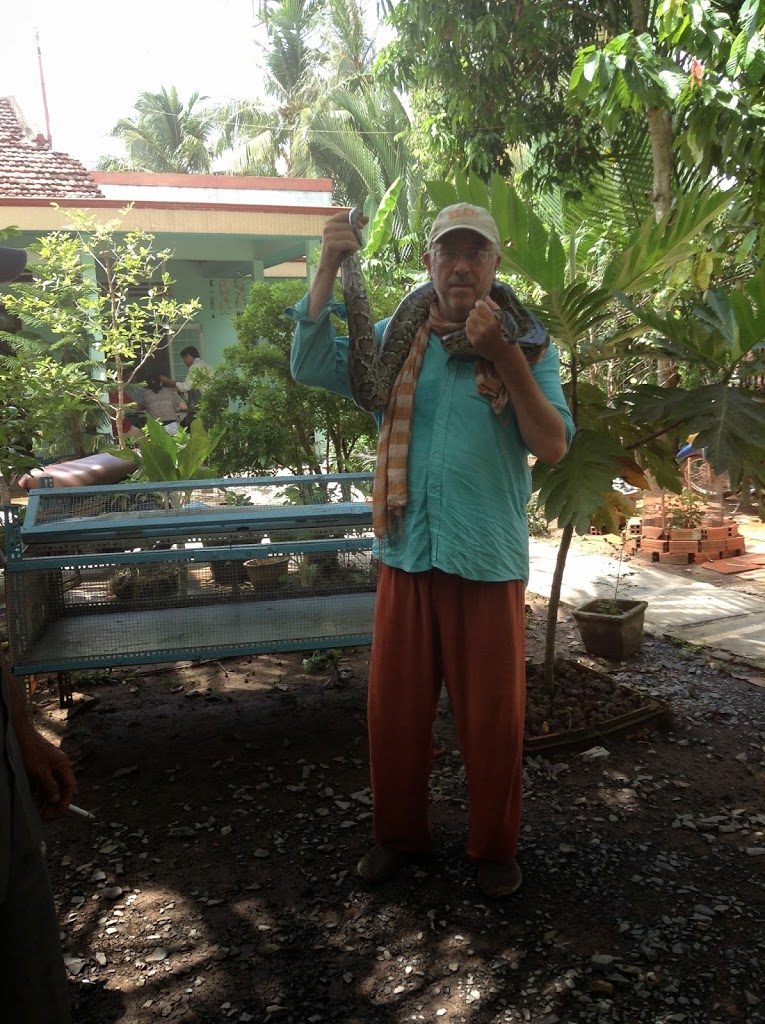 |
| Ben makes friends with a large python. The reason this is not closer up, is because both Peta and Adam are NOT fans of snakes. |
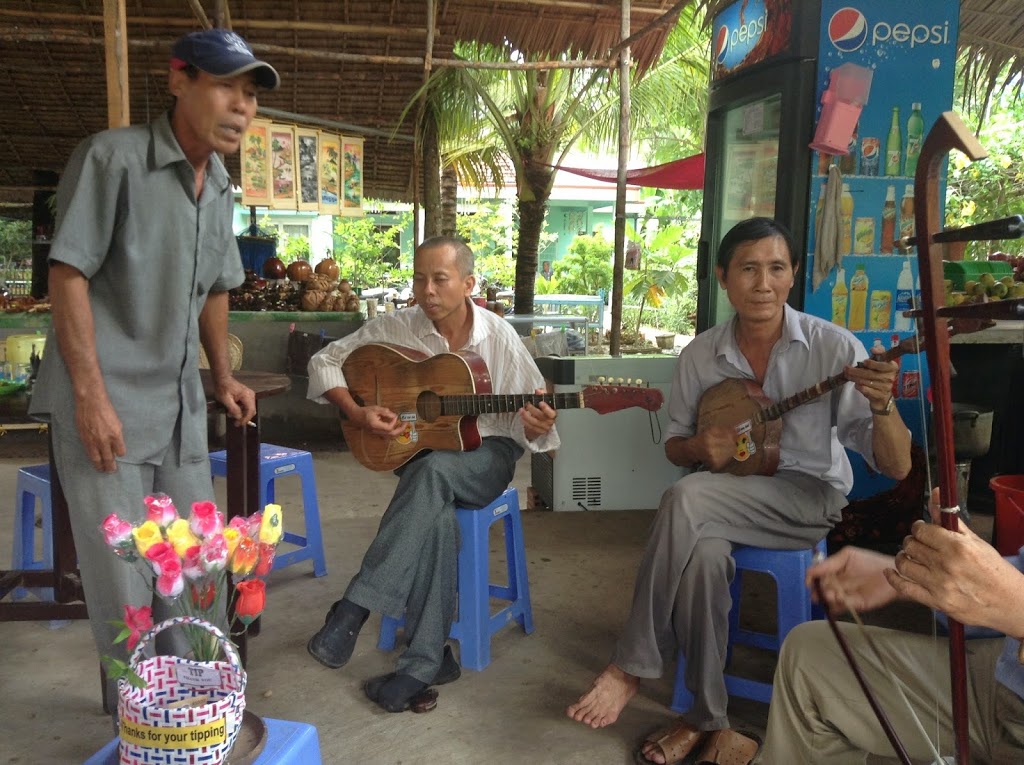 |
| We also have to sit through Huang’s karaoke singing with the local acoustic group. |
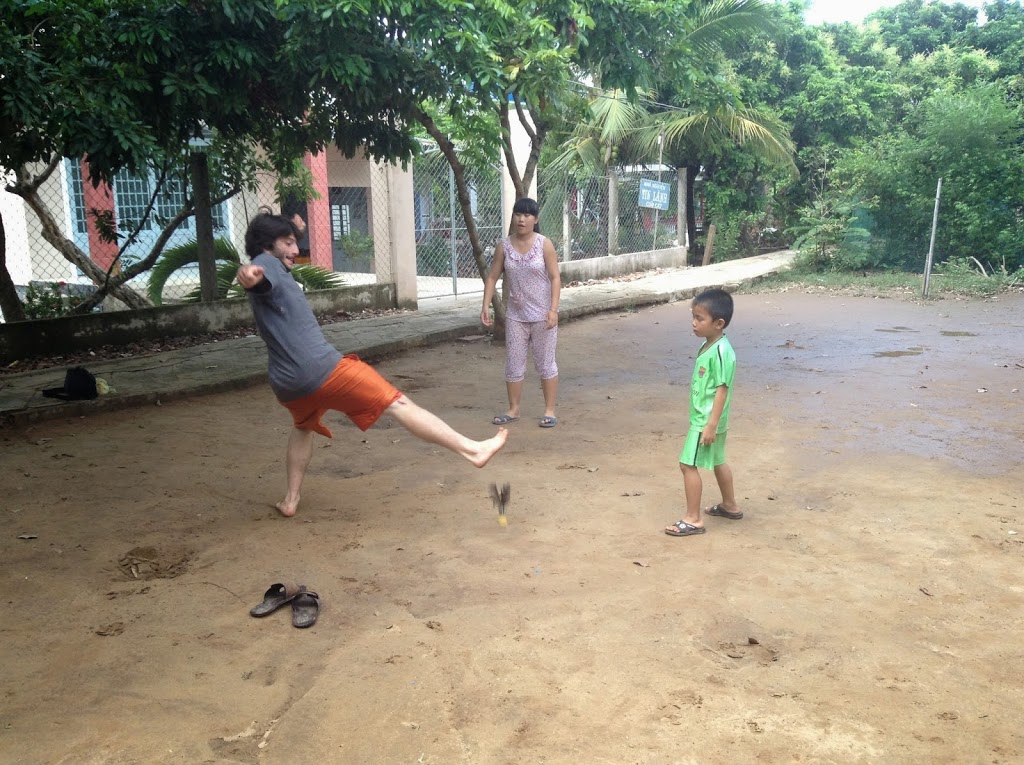 |
| Adam joins in with a group of kids playing “soccer” with a makeshift ball. |
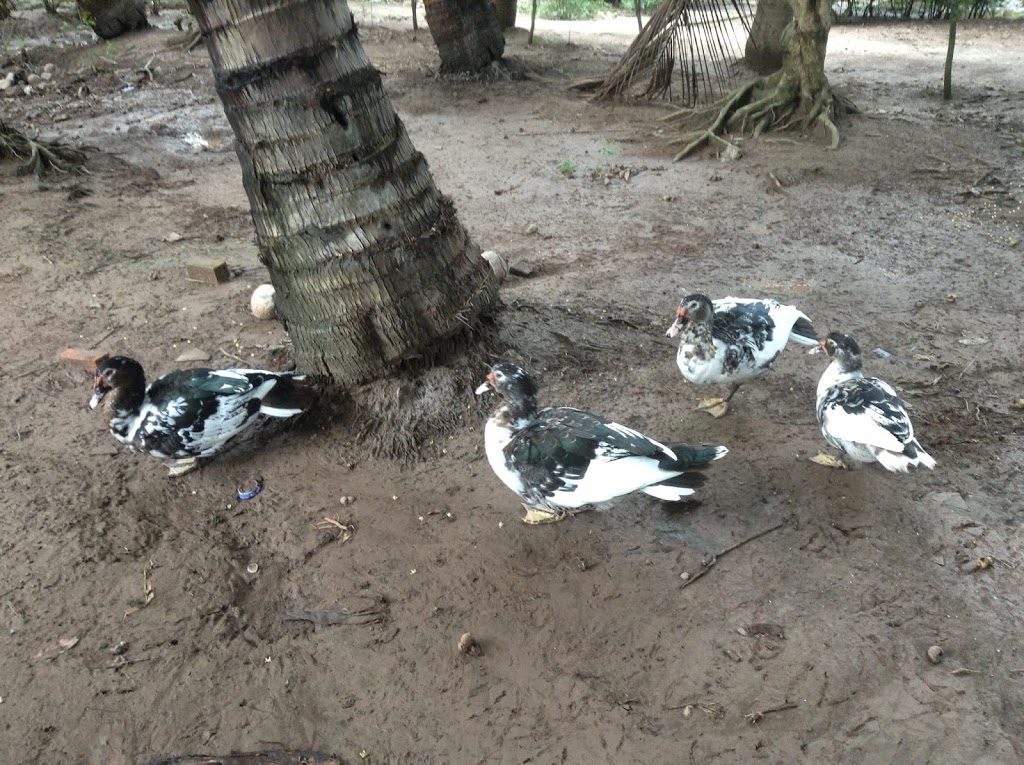 |
| Some very attractive black and white ducks roaming around the houses along the river. |
 |
| Small house shrine in the front, coconut shells spread drying in the sun on the ground. These shells are used for fire fuel. |
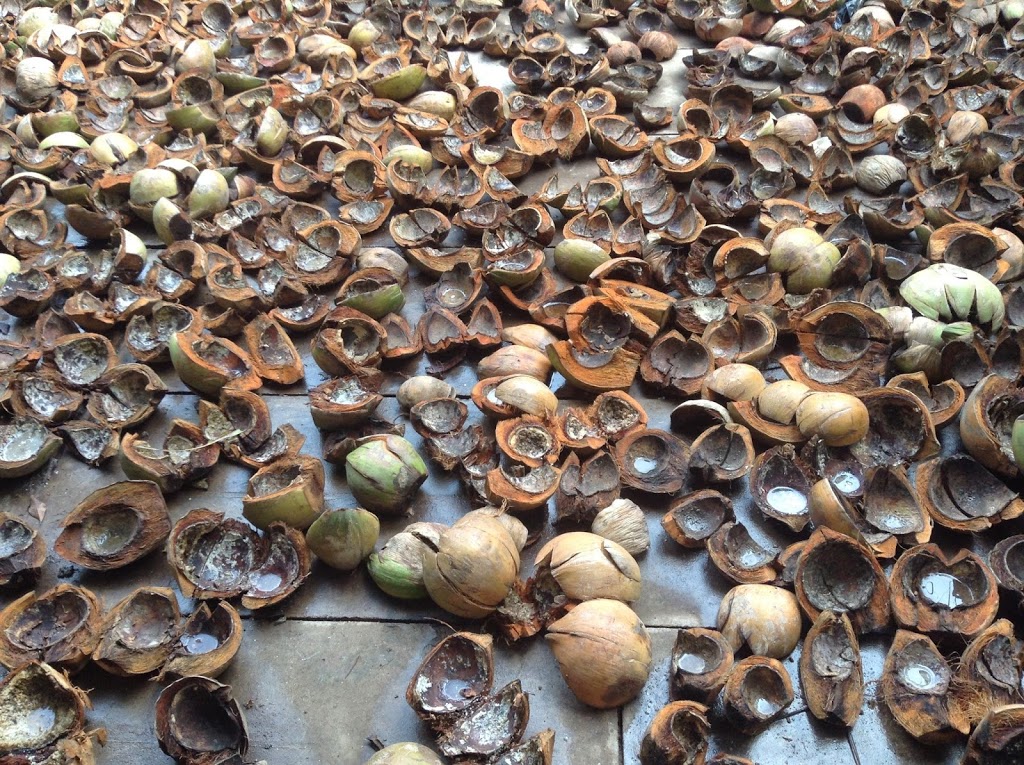 |
| Coconut shells are everywhere! |
Ben Tre does not quite hold our interest and we are soon on our way, with an easy bus ride, followed by a short ferry across the river into the larger Mekong Delta City of Vinh Long.
 |
| View of the river through a window on the ferry. |


















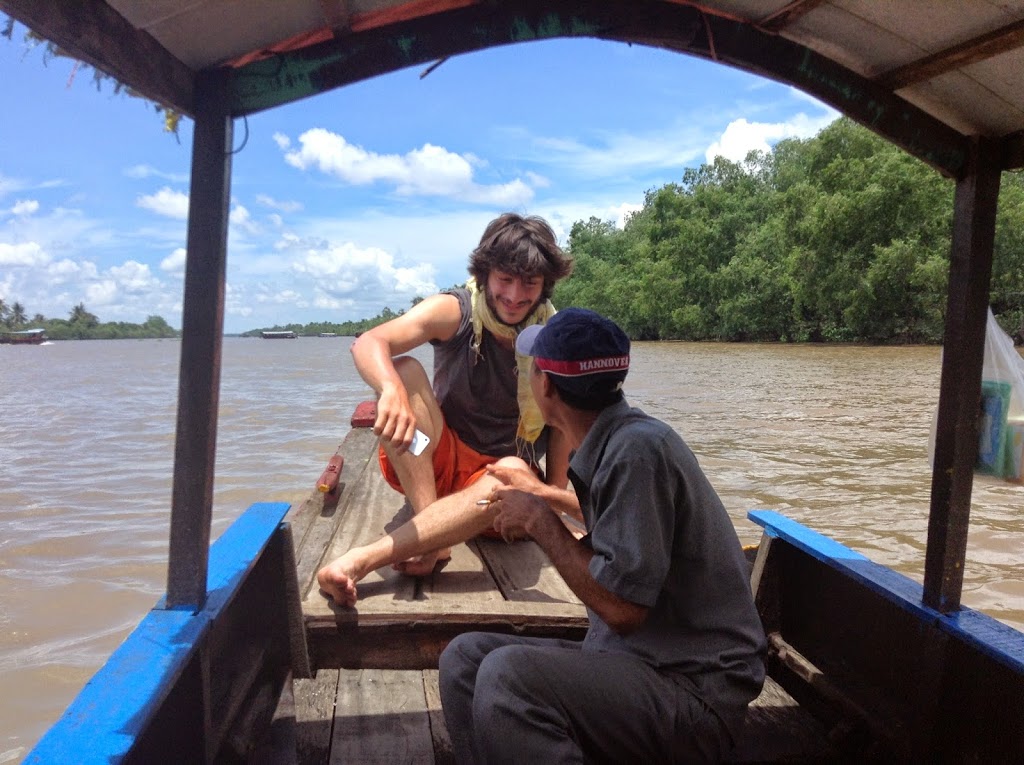

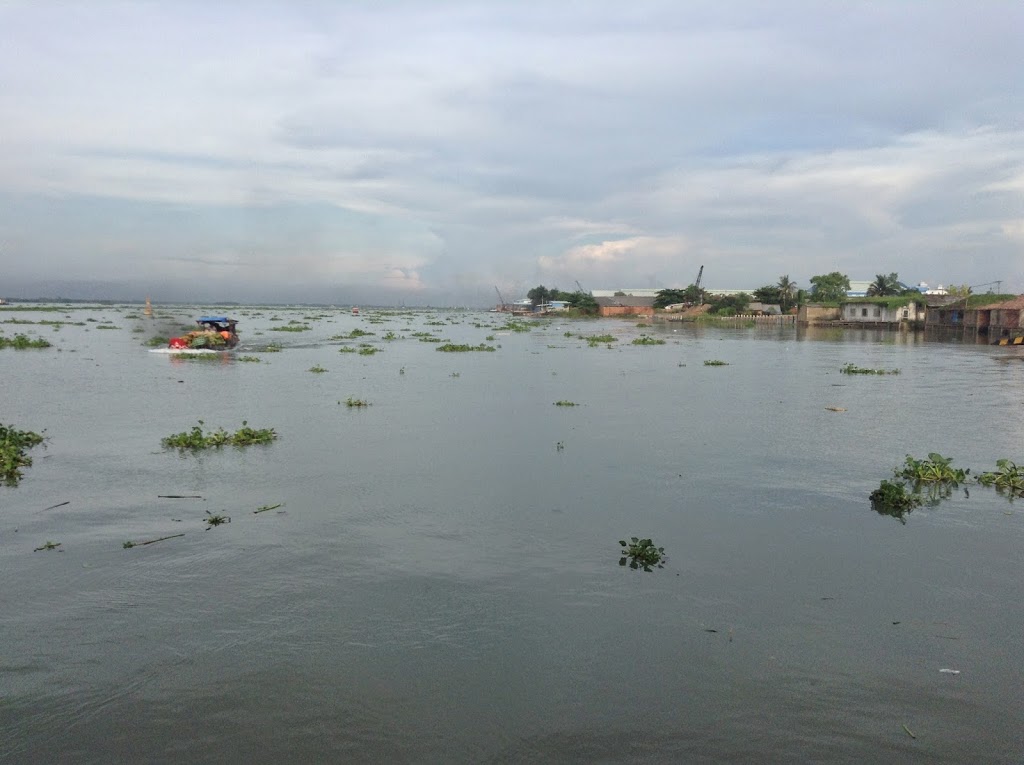
Of course coconut shells are used for fuel! Never occurred to me but it’s obvious. Thanks for another great post.
Thank you! I am a huge fan of coconut water and pure coconut oil! A fruit with so many multiple uses. In Sri Lanka the fibrous shell is used to make rope.
I would be happy spending a few days just sitting in meditation with that bell alone.
Re the bell, watch for forthcoming blog entry – visited a monastery today and orange robed monk invited us to sit UNDER the bell as he rang it… Awesome vibrations…
This topic is wonder. I like it so much. If you alowed, I could use it to post in my website mekong delta
Thank you so much,
Nguyen, yes, with pleasure, as long as the link to Green Global Trek is posted along with it. Thank you!